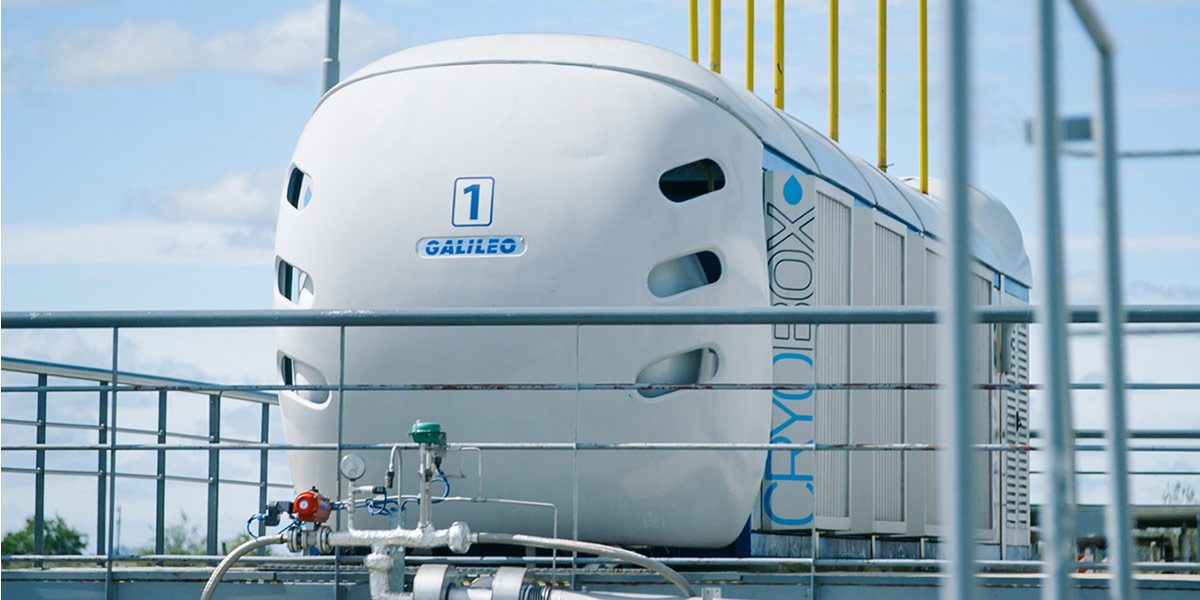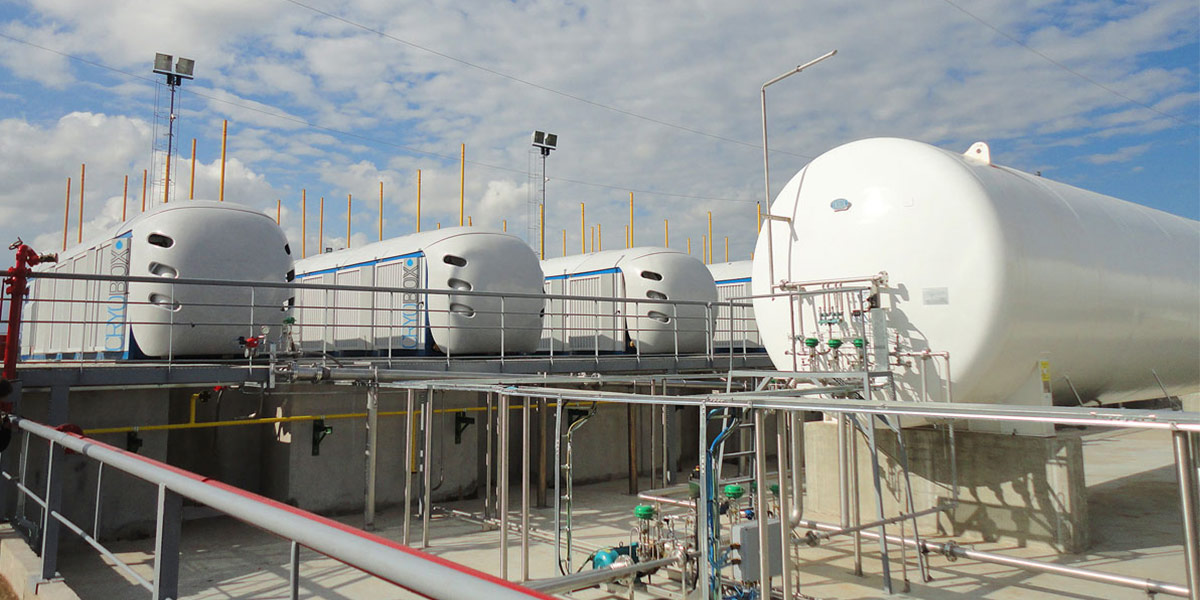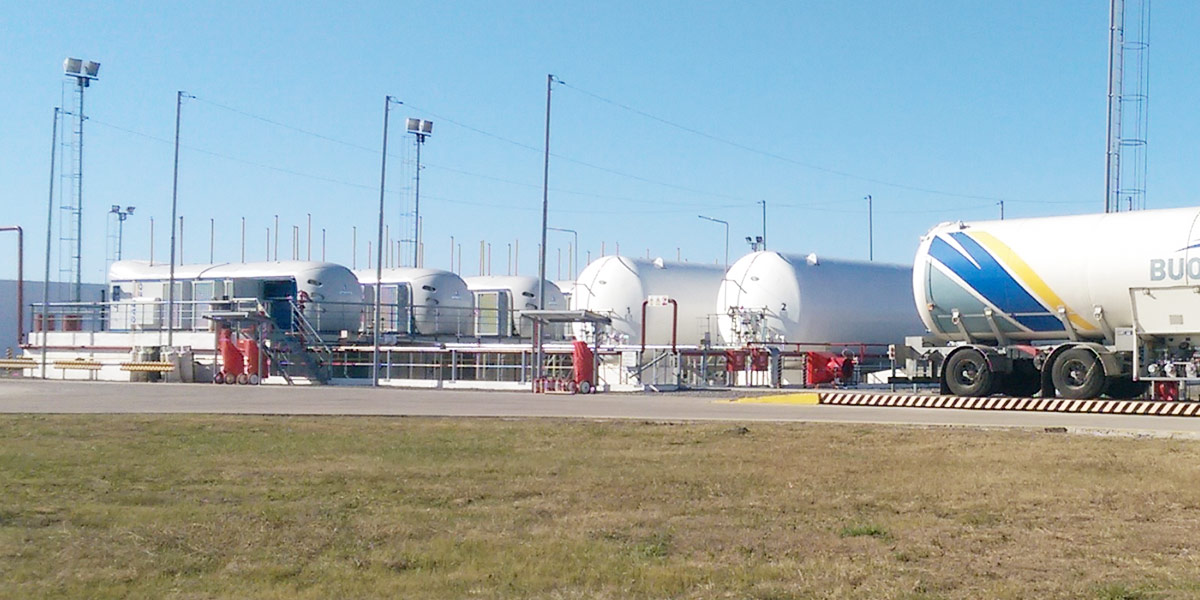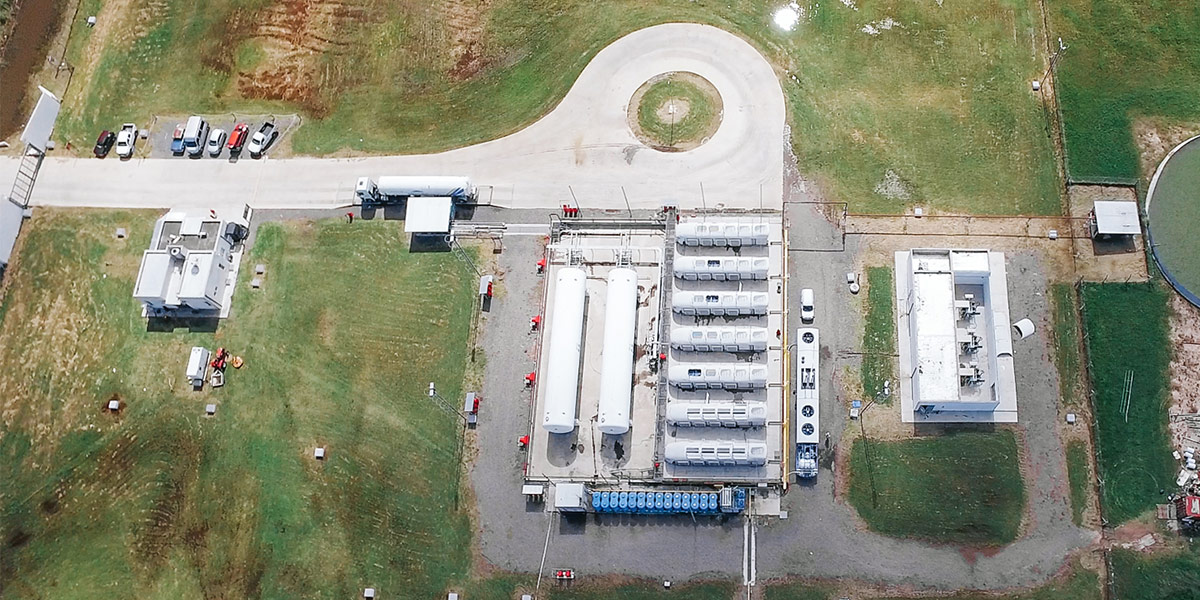Galileo brings on demand LNG to the marine industry
Cryobox® technology makes Buquebus the first maritime company to supply its own LNG, the cleanest fuel on the market – with the highest performance.
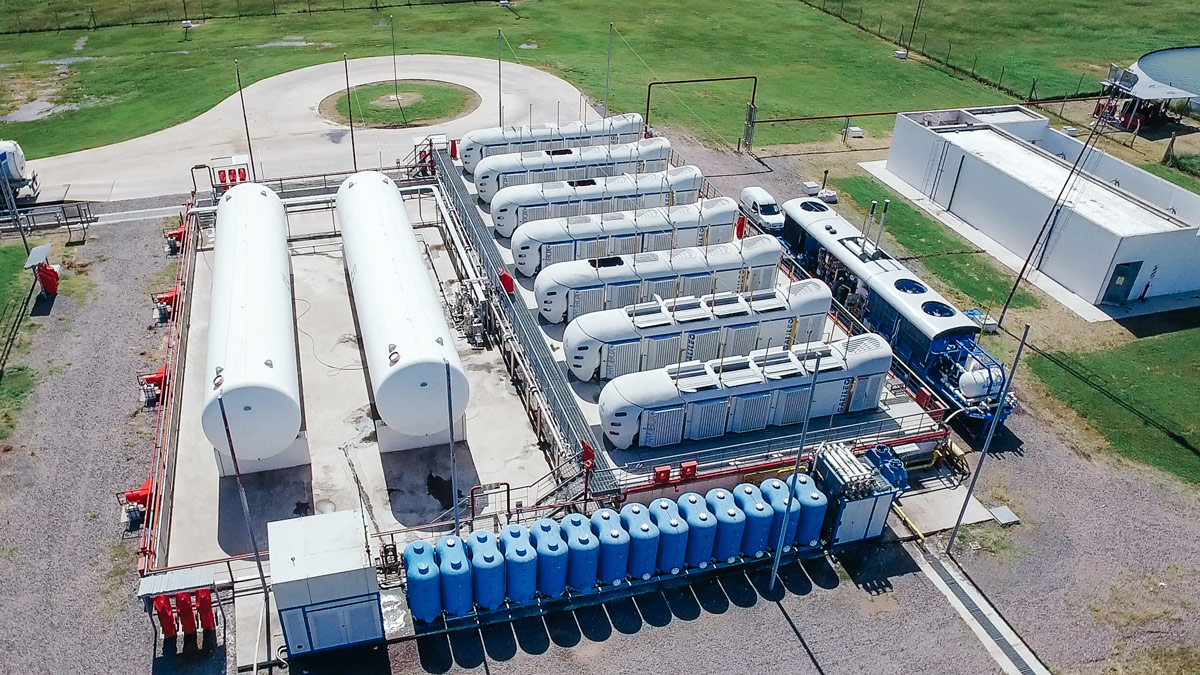
Buquebus Natural Gas Liquefaction Plant in San Vicente
This is possible in view of the fact that the Cryobox is an LNG production station designed so that the private industry and communities can become their own small scale LNG suppliers. Until now, major technological barriers and the need for long term capital investment prevented industries such as marine, oil and gas, long-haul trucking, rail, mining services from using LNG as a low cost and low carbon alternative for diesel fuel.
“LNG allows “Francisco” to reduce combustion emissions by 98%, in marked contrast to traditional fuels,” says Anibal Argomedo, Buquebus’s Technical Manager. At the same time, the 66 tons per day (ton/day) of LNG production required for its two daily frequencies generates 50% savings within the operating expense. Seven Cryobox stations with a capacity of 84 tpd are responsible for this LNG production.
At the Francisco’s christening event, López Mena referred to the Crybox modules as the sole equipment that can be transported to wellheads anywhere in the world, regardless of distance; gas is liquefied and its volume reduced 600 times, which makes it easy to carry in trucks to their points of destination, at a very low cost.
On February 2014, Buquebus was honored with the annual Black Diamond Award. This award is given to the top LNG fuel project to advance technology, open new markets, and achieve the smoothest execution considering the degree of difficulty.
"LNG allows 'Francisco' to reduce combustion emissions by 98%, in marked contrast to traditional fuels."
Anibal Argomedo, Buquebus's Technical Manager.
Innovation and Efficiency
In terms of savings, it would be appropriate to compare these equipments with the ‘mini LNG production-station’ due to their size, production volume of LNG, investment and operating costs. In that case, while the latter requires a capital investment (CAPEX) of around $ 310 per ton of LNG, the nano station requires only a $ 170 per ton of LNG. If we consider the annual operating expenditure (OPEX), the comparison is of 390-210 dollars per ton. Therefore, the use of a portable LNG production station as Cryobox allows savings of 50% in CAPEX and OPEX 40% per annum.
“It’s a real breakthrough in the field of technology. We were about to buy from USA a project which involved a huge liquefaction plant. We met Galileo’s team and they showed us that their undertaking is far more efficient,” said Buquebus President Juan Carlos López Mena.
“Cryobox is the result of five years of development & investigation, built on 30 years’ expertise in the manufacturing of gas compressors in Argentina,” says Osvaldo del Campo, Galileo’s CEO. “At the same time, it represents a worldwide innovative leap, as it is one-of-a-kind equipment, due to its compact dimensions and modular configuration.”
Each Cryobox unit applied to the Buquebus project is conceived as a module that can reach a maximum of 12 ton/day (4,480 GGE/day or 7,000 gal/day) of LNG. This feature allows a flexible installed capacity that can grow at the pace of the demand, through the progressive addition of modules.
“The River Plate, “Francisco’s” high speed and the 100 meter boat length are proof that LNG is the best fuel for heavy transport, and that Galileo’s technology contributes to make it happen,” adds del Campo.
Dual fuel supply
In terms of vehicle supply, the Cryobox is a dual equipment because, besides LNG, it also generates CNG depending on demand. This allows the simultaneous availability of adequate fuel for every need: CNG for urban vehicles which profit from the low cost of this fuel, and LNG for heavy transport and long distances, including boats, where saving is linked directly to the performance and autonomy originated in the higher energy density of the fuel.
The same concept can be applied to the Galileo’s Virtual Pipeline® System for gas distribution by road, where the best alternative is CNG up to 250 miles, and beyond that distance, LNG.
“I imagine fleets, stations on motorways offering both CNG and LNG, major stations producing LNG for small-scale distribution using our Virtual Pipeline system for other stations and industries. I also imagine its use in bunkering operations for the fueling of commercial or private boats, such as yachts and ocean-going vessels. This offers a highly competitive tool; the cost of transportation is one of the essential factors of the market products to bear in mind. The fact that ships can operate on LNG radically change the cost structure of the different industries,” del Campo concludes.
Multiple configurations
The Cryobox is also a “plug-and-play” module that can be sent to any destination by trailer for its immediate commissioning, since it can be installed at a fueling station and then connected straight to a gas pipeline distribution or to a modular treatment plant which allows gas pre-conditioning at a remote natural gas field. Biomethane can be also considered as a source for liquefaction or gas compression.
Therefore, this product presents multiple standard configurations that offer similar production capacities, but from different inlet pressures.
